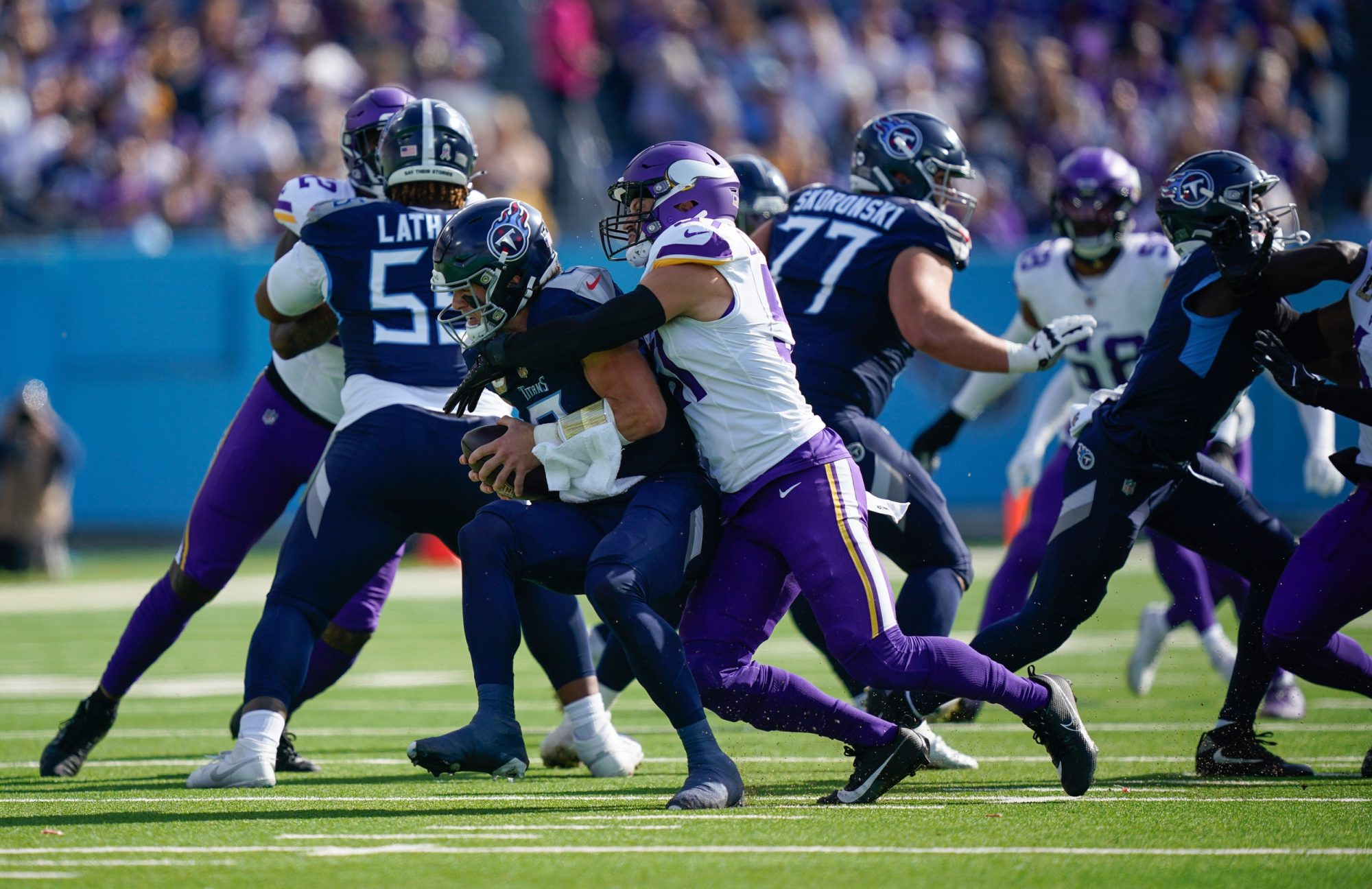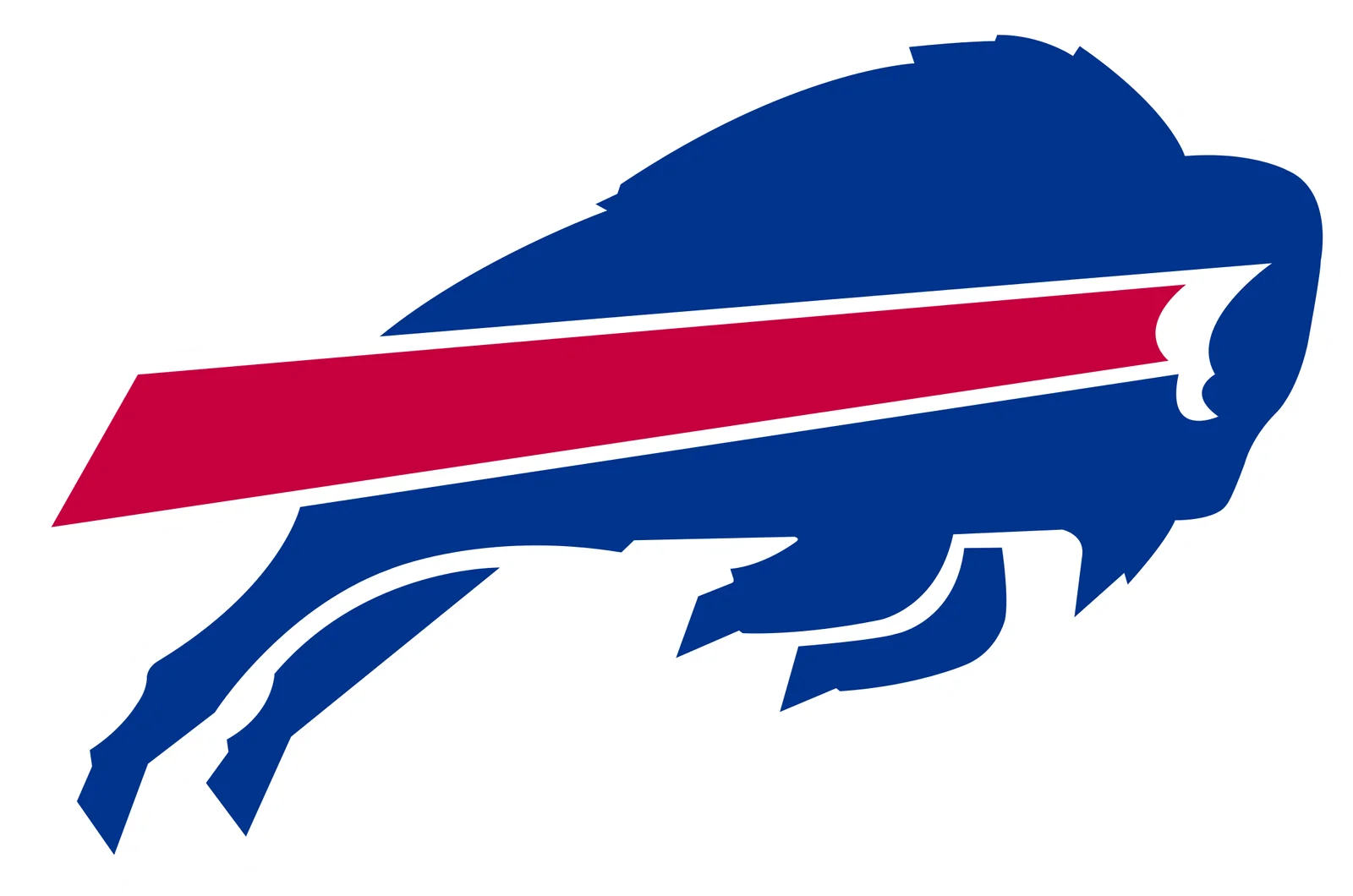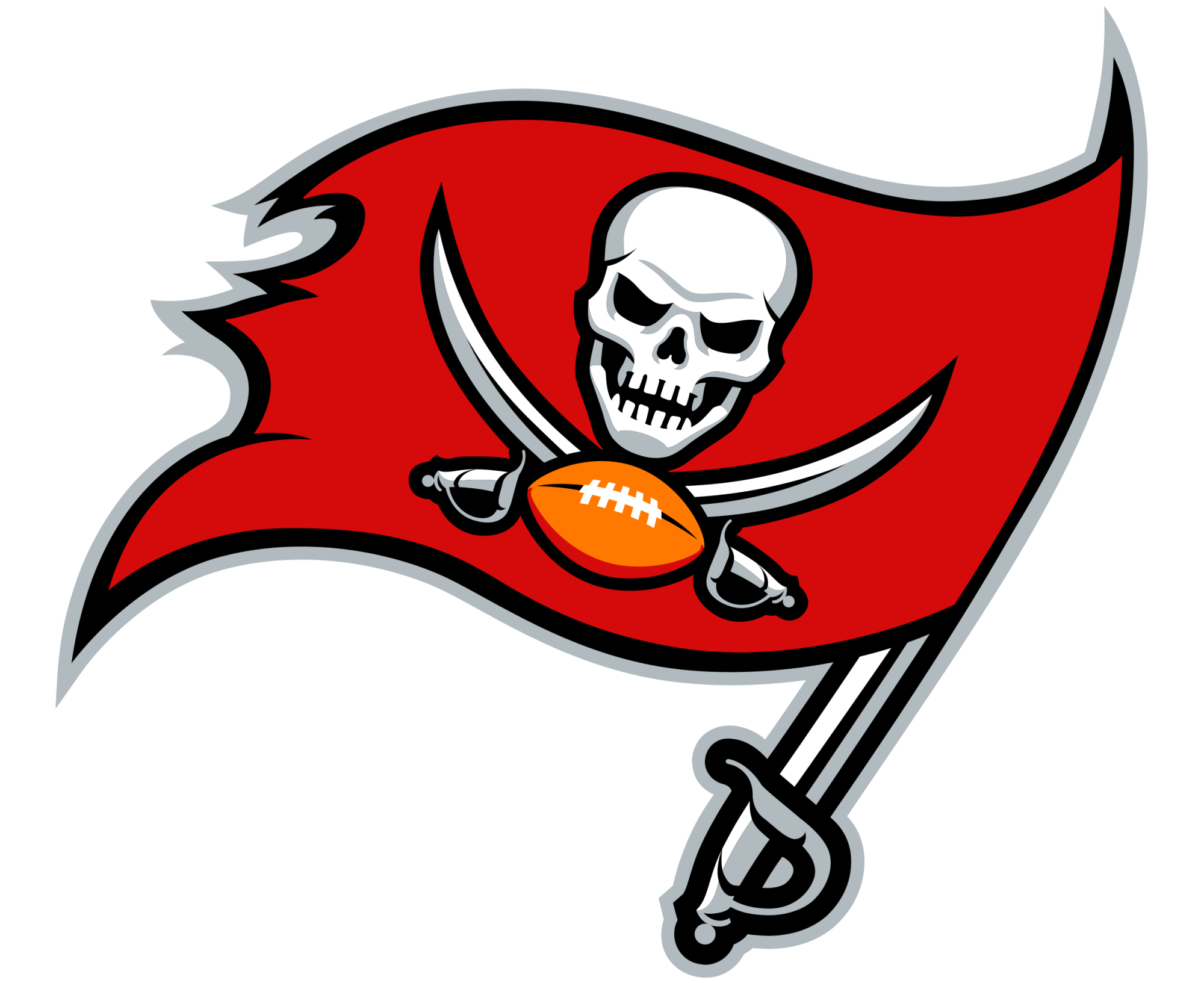Minnesota’s Most Important Statistic From Win Over the Titans

Credit: Denny Simmons via Imagn Images
At this point, Brian Flores owns the blitz. His disguises are crucial because, as long as he’s helmed the Minnesota Vikings defense, he’s probably sending extra guys. It’s just been a matter of who. Last season, when his Vikings blitzed on an absurd 51.5% of their defensive plays, it was to patch up a pass rush that was thin on talent. All those extra bodies only translated to 43 sacks, which was tied for 19th in the NFL.
This season, the Vikings have brought the blitz “just” 38.9% of the time. That’s still first in the NFL, and it’s not particularly close — the Denver Broncos are the only other team above even 35%. The pass-rushing stats are better, as they’re tied for sixth with 30 sacks, and lead the league in pressure percentage (29.1%). But once again, Flores has leaned on the blitz out of necessity.
Thanks to the arrival of Jonathan Greenard, Andrew Van Ginkel, and Blake Cashman, Minnesota is much more adept on the pass rush… except when they don’t blitz. The Vikings have struggled mightily when sending four or fewer pass-rushers to the quarterback.
Or have, until Sunday’s 23-13 win over the Tennesee Titans.
The Vikings are just rushing four and obliterating Will Levis. Andrew Van Ginkel got him twice in a row.
— Alec Lewis (@alec_lewis) November 17, 2024
Minnesota’s defense had a field day in Tennessee, sacking Levis five times, their most in a single game since they got to Brock Purdy six times in Week 2. But more crucially than the sack total is this little nugget: All five of the Vikings’ sacks came with them rushing four players or fewer.
Up until Sunday, the Vikings have only been able to sack the QB on 7.2% of passing plays where they didn’t bring the blitz. It’s not horrible, but it’s only a slight increase from last season (6.9%), and it justifies Flores’ heavy reliance on the blitz.
But that changes if Sunday was a springboard to a more potent four-man rush in Minnesota. After all, if they’re able to regularly make game-changing plays like Blake Cashman’s third-down sack on the Titans’ first drive, why roll those dice so frequently?
Straight up the middle for the sack.@blockayyy
📺: @NFLonCBS pic.twitter.com/N9y3IIVbG9
— Minnesota Vikings (@Vikings) November 17, 2024
Tennessee’s interior line absolutely crumbled on this play, but take a look what might have been available had the Titans stymied the four-man rush, or had to send Jonathan Greenard (No. 58).
Vikings DC Brian Flores brings the blitz from everywhere including having the LB line up in the interior gaps and attack. That's what LB Blake Cashman did here to get the sack for a 10 yd loss last series. pic.twitter.com/JxRJIpuZUz
— TURRON DAVENPORT (@TDavenport_NFL) November 17, 2024
The coverage on the right side of the field was exemplary on this play, but Chig Okonkwo was open around the line of scrimmage. If Cashman can’t get to Levis, or if Greenard has to be sent to the QB, maybe the Titans can exploit that hole for a first down. Then again, we’ll never know. And that’s the point.
Again, Tennessee’s offensive line was awful, but if the Vikings can build on this success, their defensive options open immensely. What can Flores do with this defense if he doesn’t have to blitz at a historically high rate? What happens when he feels confident in lowering plays where the Vikings are vulnerable to the kind of home-run plays the Titans had on their lone touchdown?
98-YARD TD! 😱😱 Will Levis takes a shot out of the end zone and it pays off for the @Titans!
📺: #MINvsTEN on CBS/Paramount+
📱: https://t.co/waVpO909ge pic.twitter.com/0o5Uj7RZ9q— NFL (@NFL) November 17, 2024
A strong pass rush is essential for the playoffs, and Flores has been able to manufacture that for Minnesota with schematic wizardry. But the less you have to do something, the less predictable you become, and for Flores, a lack of predictiveness is power. If the Vikings can get home to the QB with a four-man rush, you’ll see this already-elite defense rise to yet another level.
Up Next





